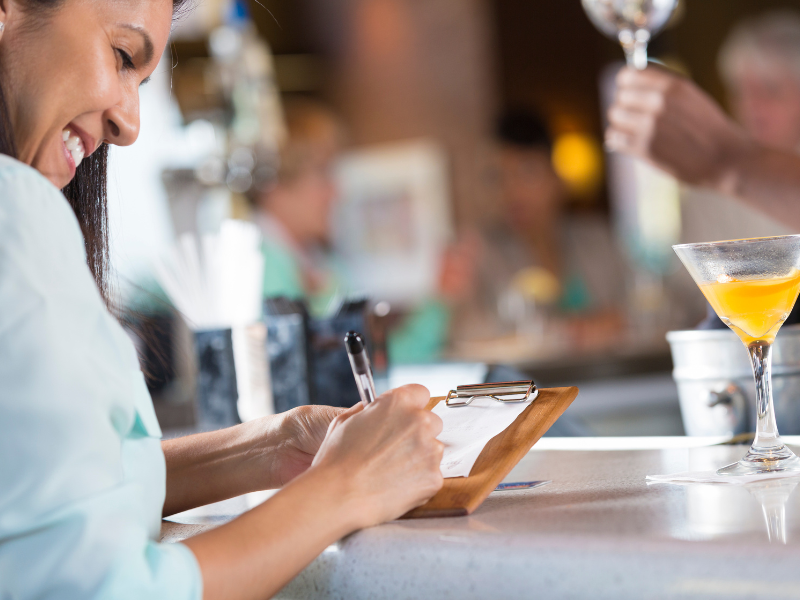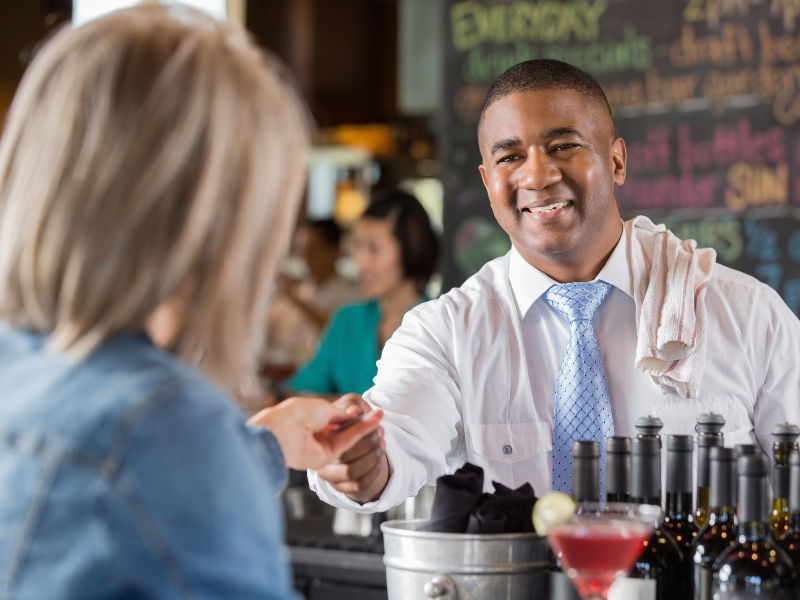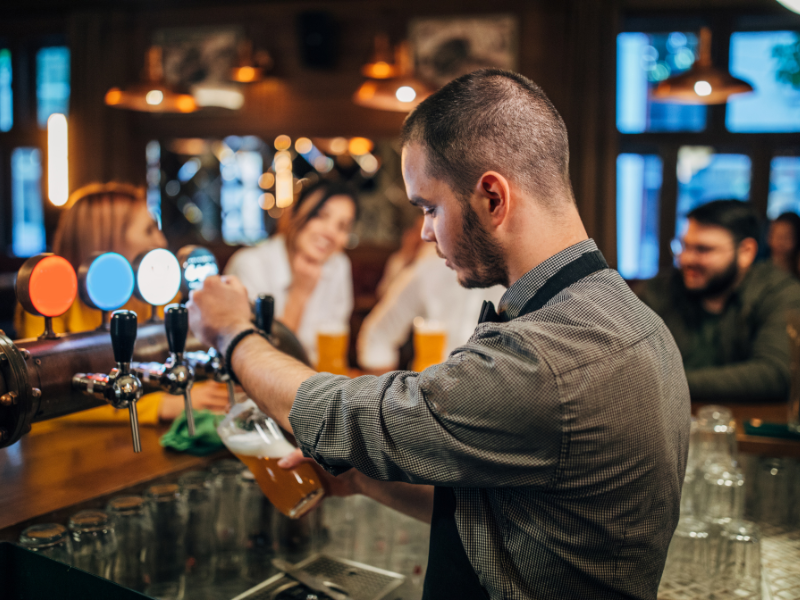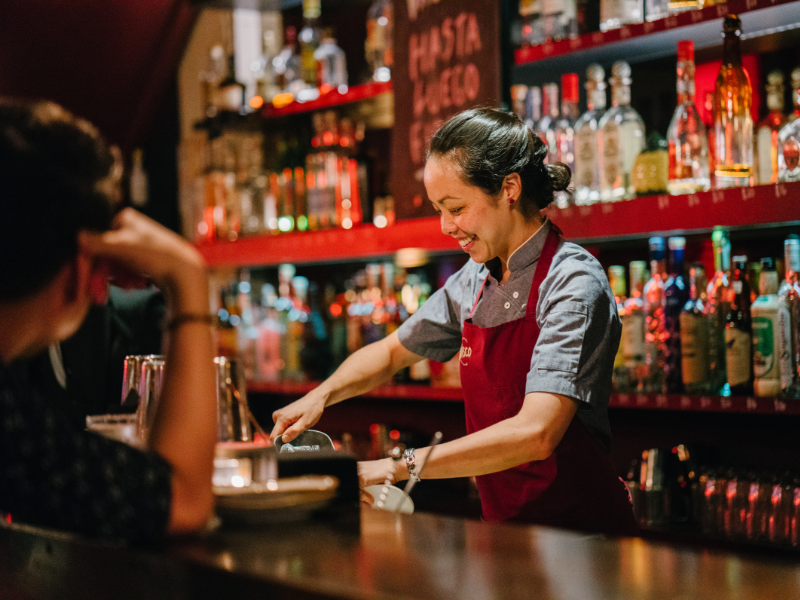Feature your business, services, products, events & news. Submit Website.
Breaking Top Featured Content:
What is a Bar Tab and How do They Work?

In the intricate dance of commerce and camaraderie that forms the heart of the nightlife industry, few things are as ubiquitous and essential as the simple, yet often misunderstood, bar tab.
Serving as a lifeline to patrons and an indispensable tool for establishments, answering questions like “What is a bar tab?” and “How do bar tabs work?” is an absolute necessity. These essential questions are often overlooked, but they are relevant to both customers and bar owners.
Worldwide, the bar tab system is a prevalent fixture, whether in an intimate pub tucked away in the corners of Dublin or a high-energy cocktail lounge pulsating with life in the heart of New York. It streamlines the financial transactions between patrons and business owners while enabling an uninterrupted flow of conviviality and refreshments.
As a small business owner or entrepreneur, especially within the hospitality industry, demystifying the world of bar tabs not only enhances operational efficiency but also improves the customer experience.
What is a Bar Tab?

So, what exactly is a bar tab? If you’ve ever worked in or patronized a bar, you’ve likely heard this bar terminology, but you may not understand exactly what it is. In its most basic form, a bar tab is a running account that an establishment keeps tracking a customer’s purchases throughout their visit.
Instead of paying for each drink or bar snack ordered, customers provide their credit or debit card to the bartender at the beginning of their visit, who then opens a tab in their name.
The tab allows customers to order freely throughout their stay, with the final total settled at the end. It is akin to a short-term line of credit the bar extends to the customer for their visit.
A bar tab provides customers convenience, flexibility and an uninterrupted experience. It eliminates the need for numerous card swipes or cash transactions and allows them to enjoy their time at the bar without worrying about immediate payment for each round of drinks.
For bar owners and staff, the bar tab system streamlines service and financial transactions. It minimizes the time spent handling cash or cards, making it easier for bartenders to focus on serving drinks and engaging with patrons.
From a business perspective, bar tabs also encourage customers to order more throughout their stay, potentially boosting sales.
In small business bars, understanding and efficiently managing bar tabs can mean the difference between a smoothly operating establishment that provides a superior customer experience and one that struggles with inefficiencies and customer dissatisfaction.
Historical Background of Bar Tabs

Though we now associate bar tabs with contemporary hospitality services, their roots trace back much further in history.
The concept of “tabs” or “tabs of credit” emerged as early as the Middle Ages when taverns were the heart of community life. People often traded goods or services, and tavern owners would keep a tab or tally of who owed what instead of immediate payment.
However, the modern concept of the bar tab as we understand it today gained prominence in the early 20th century.
During the Prohibition era in the United States (1920-1933), when the production, sale and transport of alcoholic beverages were illegal, secret bars or “speakeasies” found a novel way to manage their transactions covertly.
They started running tabs for their trusted customers, allowing them to consume now and pay later, thus minimizing the risk of immediate cash transactions.
The system was appreciated for its convenience and simplicity and survived even after Prohibition ended. Today, the bar tab has become an integral part of the bar experience globally, helping businesses streamline their services while providing an enhanced experience for patrons.
How Does a Bar Tab Work: A Step-by-Step Process
Navigating the mechanics of a bar tab can seem like a daunting task to the uninitiated. However, understanding this process is beneficial for patrons and essential for entrepreneurs aiming to implement this system in their establishments.
The following steps offer a detailed guide on how a bar tab works from when a customer opens one to the final act of settling the bill.
| Bar Tab Steps | What is it? | How do you do it? | Why does it matter? |
|---|---|---|---|
| Open a Bar Tab | Begin the tab process by securing a payment method. | Ask the customer for their credit or debit card, along with a form of ID if required, then record their name and start a new tab in the system linked to the provided card. | This assures the bar that the customer has the means to pay for their orders and allows for accurate tracking of the customer’s purchases. |
| Pre-authorize a Debit or Credit Card | Verify the validity and funds of the customer’s card. | Use the POS system to preauthorize the card, confirming with the bank that the card is valid and has enough funds to cover potential charges. | This step protects the bar from potential fraud and non-payment, ensuring that customers can cover their tabs. |
| 3. Add Orders to a Running Tab | Update the customer’s bill as they order. | As the customer orders drinks or food, add each item to their tab in the POS system, keeping a running tally of their total expenditure. | This allows for continuous tracking of the customer’s purchases, providing a seamless ordering experience without requiring frequent cash or card transactions. |
| 4. Close the Bar Tab | Finalize the customer’s bill at the end of their visit. | When the customer is ready to leave, provide them with their bill, allow for review, then process the payment, replacing the pre-authorized hold with the final charge, which often includes an added gratuity. | This settles the customer’s account, facilitating the exchange of payment for services rendered, and ensures both the bar and its staff are compensated, even if a tab is left unpaid. |
Opening a Bar Tab
When a customer decides to open a bar tab, the process usually begins by providing their credit or debit card to the bartender or server. The card acts as a security measure, assuring the bar that the customer has the means to pay for their orders.
In some establishments, a form of identification may also be requested. The bartender then records the customer’s name and starts a new tab, associating it with the provided card or ID. This process enables the bar to track the customer’s purchases throughout their visit accurately.
Pre-Authorization of a Credit or Debit Card
The process of opening a bar tab often involves the pre-authorization of a customer’s credit or debit card. This crucial step involves the bar verifying with the bank that the card is valid and has sufficient funds to cover potential charges.
Essentially, the bank “reserves” a specific amount—say $50 or $100—for the bar, though no money is actually deducted from the customer’s account at this point. Pre-authorization protects the establishment from potential fraud and ensures that customers can cover their tabs.
Adding Orders to a Running Tab
As the customer enjoys their time at the bar, any subsequent orders are added to the running bill. The bartender updates the tab number each time the customer orders a new drink or item.
The ongoing tally allows the bar to keep track of the customer’s total expenditure while the customer enjoys the convenience of ordering freely without handling cash or cards after each purchase.
Closing a Bar Tab
Closing a bar tab marks the end of the customer’s visit. At this point, the customer requests their bill, reviews it for accuracy and pays for their purchases. The pre-authorized hold on the credit or debit card is replaced with the final charge, which often includes an added gratuity.
Most establishments calculate a suggested tip amount—generally around 15 to 20% off the total bill—but the final decision rests with the customer.
If a tab is left unpaid or forgotten, it’s common practice for the bar to charge the card on file, including a predetermined gratuity, ensuring that both the bar and its staff are compensated for their services.
The Benefits of Implementing Tabs in Your Bar Business

As we take an even deeper dive into the world of bar tabs, it becomes clear that their adoption extends far beyond traditional conventions. The use of bar tabs in a bar business brings several benefits, including enhanced customer experience, increased sales and profitability, and streamlined operations.
Continue reading as we unpack these advantages to better understand how they contribute to the overall success of a bar business.
Enhancing Customer Experience

In the hospitality industry, customer experience is paramount. A bar tab system enhances this experience by creating a more relaxed and enjoyable environment for patrons.
It allows customers to focus on the social aspect of their visit rather than continuously dealing with monetary transactions. This ease and convenience and the absence of transactional interruptions often encourage customers to stay longer and order more.
Bar tabs also provide a touch of trust and personalization – subtly reinforcing the customer’s relationship with the establishment.
Boosting Sales and Profitability

A bar tab is not just customer-friendly; it’s also a strategic tool for boosting sales and profitability. Customers who don’t have to think about paying for every drink individually are more likely to order additional rounds.
Moreover, the ease of adding one more item to a running tab can lead to upselling opportunities, ultimately increasing the average spend per customer. As such, the bar tab system can directly contribute to a bar’s bottom line, enhancing revenue and profitability.
Streamlining Bar Operations

From an operational perspective, implementing a bar tab system can significantly streamline service processes. By reducing the frequency of cash or card transactions, bartenders can focus more on serving drinks and less on handling money.
The increased efficiency can lead to quicker service times, improved workflow, and higher customer satisfaction. Tracking customer orders on a tab can simplify end-of-day accounting and reconciliation processes, making it easier to manage the financial aspects of the bar business.
Using Point of Sale Software (POS System) for Efficient Bar Tab Management

Managing bar tabs manually can be challenging, particularly in a busy environment. However, advancements in technology, such as Point of Sale software with preauthorization features, provide an efficient and effective solution for bar tab management.
POS preauthorization systems are a powerful tool that allows bar owners to manage tabs digitally while also verifying customer payment methods in real time. These systems link directly to your bar’s POS software, ensuring all orders are recorded accurately on the customer’s tab.
Digital tracking provides a more secure, accurate, and efficient way to manage bar tabs, revolutionizing the overall process. A few of the key benefits offered by the POS preauthorization system for bar tab management include:
- Enhanced Efficiency: Digital tracking of bar tabs reduces the need for manual record-keeping, enabling staff to serve customers quickly and accurately.
- Increased Security: POS systems reduce the risk of fraud or non-payment by verifying the customer’s card details and ensuring sufficient funds are available at the time the tab is opened.
- Improved Accuracy: Digital tab management ensures each order is accurately added to the correct tab, reducing the risk of human error.
- Simplified End-of-Day Reconciliation: POS systems simplify end-of-day accounting and reconciliation processes by keeping a precise record of all transactions, saving time and reducing potential discrepancies.
By adopting a POS preauthorization system for managing bar tabs, businesses can ensure a smooth, secure and efficient transaction process, contributing to a better customer experience and a more successful bar operation.
Best Practices for Managing Bar Tabs

Effectively managing bar tabs is crucial for a smooth, efficient bar operation. Employing best practices enhances customer experience and safeguards the business against potential issues such as unpaid tabs or mischarged orders.
Want to ensure optimal bar tag management at your establishment: Consider the following practical tips:
- Implement a Robust POS System: A reliable POS system can streamline the process of managing bar tabs, ensuring accurate tracking of orders, and simplifying end-of-day reconciliation.
- Educate Your Staff: Ensure all staff members are trained in opening, managing, and closing bar tabs. This can help prevent errors and enhance customer service.
- Set a Minimum Spend: To make sure opening a tab is worthwhile for your business, consider setting a minimum spend requirement. This can deter customers from opening a tab for just one or two drinks.
- Preauthorize Cards: Always preauthorize customer cards when they open a tab. This ensures the customer can cover their bill and protects your business from unpaid tabs.
- Regularly Review Open Tabs: Encourage staff to review open tabs throughout the night. This can help catch any discrepancies early and prevent potential issues.
- Close Tabs Promptly: At the night’s end, ensure all tabs are closed. If a customer forgets to close their tab, have a policy in place to charge the card on file, including a predetermined gratuity.
By following these best practices, bar owners can ensure efficient, error-free management of bar tabs, leading to better customer experiences, increased sales and a smoothly running business.
FAQs: What is a Bar Tab
Why should I consider implementing bar tabs in my bar?
Implementing bar tabs in your business can significantly enhance the customer experience by offering flexibility and uninterrupted service. From a business perspective, bar tabs can increase sales, as customers who don’t have to pay after each drink tend to order more.
Bar tabs also streamline service operations, allowing staff to focus on serving customers rather than handling numerous transactions, thus boosting efficiency and productivity.
How can I efficiently manage multiple bar tabs at once?
Efficient management of multiple bar tabs often hinges on utilizing a robust POS system. These systems can digitally track all opened tabs, accurately record orders and manage payments, making it easier to oversee numerous tabs simultaneously.
Training staff to handle multiple tabs and regularly reviewing open tabs can also contribute to smooth and efficient management, ensuring a high standard of service even during busy periods.
What should I do if a customer leaves without paying their bar tab?
If a customer leaves without paying their bar tab, having a predefined policy in place is critical. Most bars will preauthorize a customer’s credit card or debit card upon opening a tab, which allows them to charge the card on file for any unpaid tabs. This policy should also include charging a predetermined gratuity to compensate the staff. Communicate this policy to customers when they open a tab to avoid misunderstandings later.
Can a customer dispute charges on their bar tab?
Yes, a customer can dispute charges on their bar tab. However, if you’re using a POS system to track orders accurately and you’ve ensured transparency with the customer throughout their visit, disputes should be rare.
In the event of a dispute, having a comprehensive record of the customer’s orders can help resolve the issue swiftly and fairly. Good communication and clear policies are key in handling such situations.
How can I use bar tabs to benefit and retain my regular customers?
Bar tabs can play a significant role in retaining regular customers by enhancing their experience and establishing a sense of trust. The convenience and personalized service associated with bar tabs can make regular customers feel valued.
Include the tab setup process in your bartender training so team members can make the experience easy and seamless. Likewise, you might consider offering tab-based incentives such as a loyalty program where regular customers accrue points for each dollar spent on their tab, which can be redeemed for rewards. These incentives can boost customer retention and encourage more frequent visits.
This article, “What is a Bar Tab and How do They Work?” was first published on Small Business Trends
